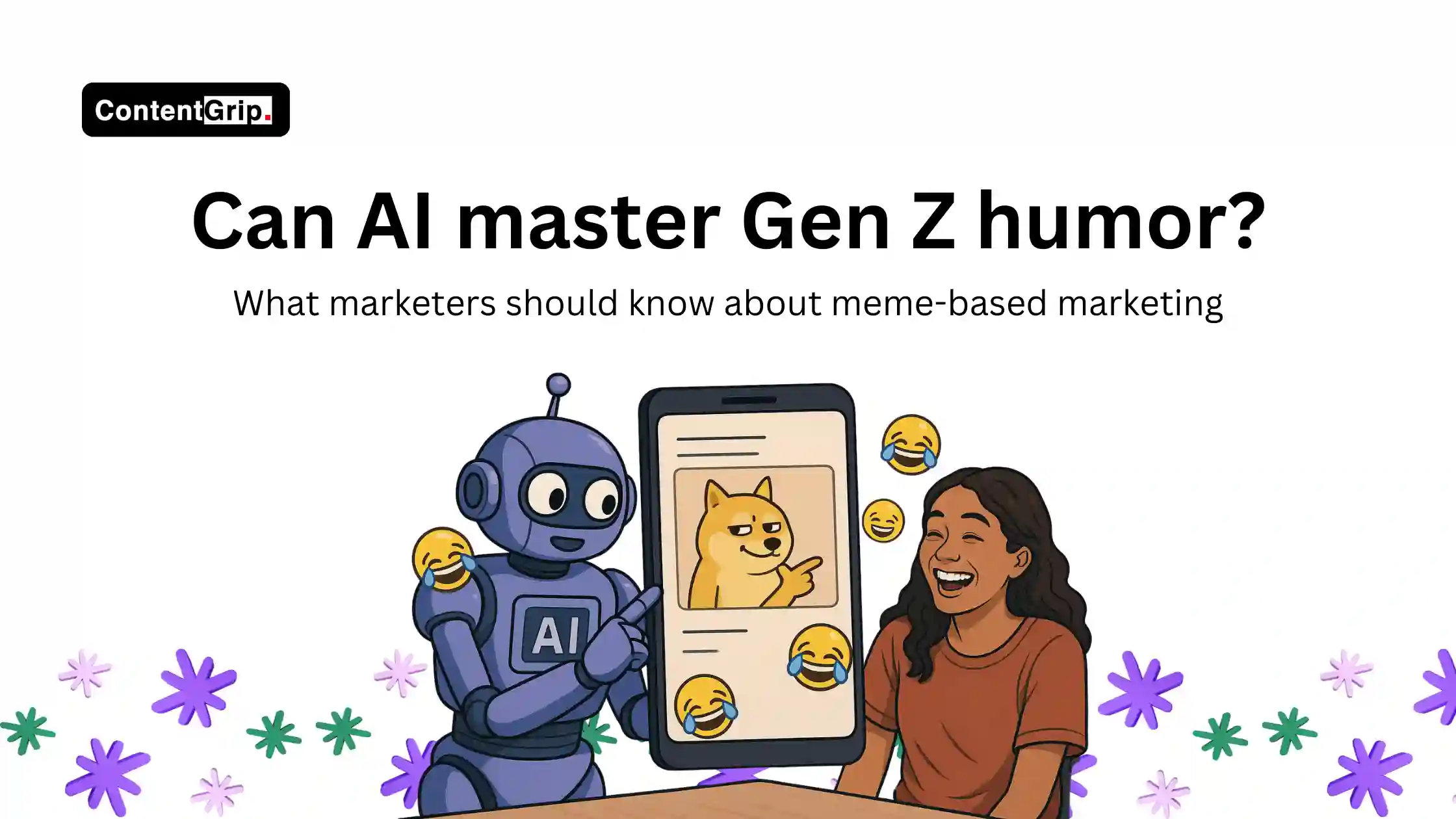Can AI master Gen Z humor? What marketers should know about meme-based marketing
As brands embrace AI for meme marketing, the challenge remains: can machines really capture Gen Z’s chaotic humor?

You’ve probably seen one by now: a weirdly off-kilter AI-generated meme that somehow almost works—or completely crashes and burns in the funniest way possible.
Whether it's a dog yelling about spreadsheets or a cat discussing venture capital, these machine-made jokes are flooding timelines. But here’s the real question for marketers:
Can AI ever really capture the irony-laced, chaos-loving humor of Gen Z?
The stakes are higher than they seem. Brands that incorporate memes into their strategy have seen a 25% increase in engagement and up to 30% higher recall rates compared to traditional ads.
Memes are also shared seven times more than non-meme content on social platforms, making them one of the most viral content types available to marketers today. With 70% of meme consumers aged 18–34, this format hits squarely within Gen Z and Millennial demographics.
This article dives into the rise of AI meme generators, the challenge of coding humor, real-world brand examples, and what marketers need to know before handing their memes over to machines.
Short on time?
Here’s a table of contents for quick access:
- What are humor engines and AI meme generators?
- Why Gen Z humor is especially hard to code
- Brand meme marketing in action
- What marketers need to know
What are humor engines and AI meme generators?
Humor engines are AI models trained to recognize and generate humor—often by learning from thousands (or millions) of jokes, memes, captions, and formats. These models aim to automate what once took human wit: turning trending ideas or images into viral-worthy content.
Popular tools include:
- Supermeme.ai – Turns text into memes using over 1,000 templates. Offers multilingual support and even AI personas.
- MemeCam – Leverages GPT-4o’s image capabilities to scan uploaded photos and generate humorous, context-aware captions.
- ChatGPT - has a variety of AI meme generators built by users
These platforms typically learn by mimicking existing meme formats and joke structures. The AI analyzes language patterns, cultural references, and visual cues, then generates content aligned with popular humor styles. It's clever, scalable—and imperfect.
Why Gen Z humor is especially hard to code
If you’ve ever felt like Gen Z memes make no sense… you’re not alone. And AI models are just as confused.
Gen Z humor thrives on absurdity, self-reference, and randomness. It's layered, emotionally charged, and often designed to confuse as much as entertain. Here’s what makes it tough for algorithms:
- Deep-fried memes – So overly edited they become surreal.
- Ironic TikToks – Parodying mainstream trends in deadpan or exaggerated ways.
- No-context captions – Pairing unrelated images and text for humor that leaves interpretation to the viewer.
Gen Z also uses humor to process serious issues—like climate anxiety, politics, or social injustice. In these cases, memes act as both critique and coping mechanism, combining levity with layered meaning. That’s something most AI still can’t replicate—emotional nuance, timing, and cultural fluency.
Brand meme marketing in action
Despite these challenges, brands are already experimenting with memes—some with the help of AI tools. Here are three examples:
- Atlassian’s Confluence used a “2022 vs. 2023” meme to show the leap from manual work to automation. It hit home with tech-forward professionals and made a dry SaaS pitch relatable.
Doing everything manually is so 2022. 😉 Level up with Confluence Cloud Premium and explore Automation: https://t.co/iWphv4wRhz pic.twitter.com/Mlcpdlhl05
— Atlassian Confluence (@Confluence) September 1, 2023
- Content Beta shared a meme of a designer being tempted by a banana labeled “AI tools.” It playfully highlighted real friction in design workflows—and resonated with AI-curious creatives.
- BarkBox regularly crafts pet-centric memes that tap into shared experiences of dog owners, building loyalty through humor that’s both niche and universally funny.
These brands didn’t just go viral—they used memes to deepen community and convey product value with zero jargon.
Some used AI tools. All relied on human taste to ensure the humor hit the mark.
What marketers need to know
Before handing your meme strategy over to the bots, here are five takeaways:
- Use AI for inspiration, not automationLet tools generate drafts or ideas, but apply a human filter to refine tone and timing.
- Know your audienceGen Z can spot forced "relatable" content instantly. Prioritize authenticity over trend-chasing.
- Avoid over-brandingSubtlety matters. A meme should feel like a joke, not a sales pitch in disguise.
- Test before postingWhat seems funny to an algorithm—or even a marketing team—might fall flat publicly. Run test rounds in private groups or with trusted community members.
- Don’t ignore ethicsHumor can backfire, especially if it touches on sensitive topics. AI doesn’t understand boundaries—marketers must set them.
So, can AI master Gen Z humor? Not yet—but it can help.
AI meme tools can save time, spark ideas, and streamline content production. But they’re still far from capturing the full complexity of Gen Z’s emotional, ironic, and layered humor.
Bottom line: AI can assist, but it can’t replace.
Until machines understand irony, cultural nuance, and emotional subtext, smart marketers will treat AI meme tools as a co-creator—not the punchline.



